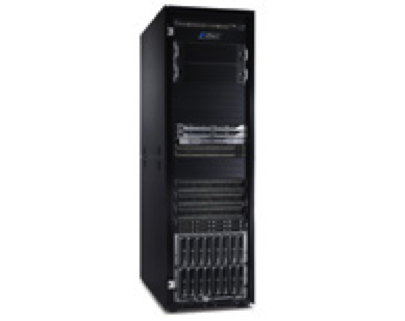Dell and VMware announced a partnership this week through which the two companies will sell a bundled system with server, network and storage components in support of virtual desktop infrastructure (VDI).
Dell's new vStart for VDI is based on VMware's View 5.1 VDI software. The rack-mountable hardware bundle is validated in various capacity configurations, depending on the size of the business.
Additionally, plug-ins are available for both VMware and Microsoft Hyper-V configurations.
On the hardware side, the vStart for VDI includes Dell's new 12th generation PowerEdge servers, as well as Dell Compellent and EqualLogic storage and Dell Force10 networking.
There are four configurations or models: the vStart 1000 for enterprises and the vStart 200, vStart 100 and vStart 50 for smaller companies. Currently, only the vStart 1000 for mid-sized firms and the vStart 50, for small- and medium-sized companies are shipping.
The vStart 50 is for organizations with up to 300 users. The vStart 1000 is for mid-market enterprises with up to 4,000 users.

Dell's vStart for VDI 1000
The configuration for vStart for VDI 50 includes a PowerEdge R620 rack mounted server, a PowerConnect switch and optional EqualLogic storage. The configuration for vStart for VDI 1000, which is designed for enterprises that want to create private clouds and host mission-critical applications, includes a PowerEdge eM620 blade server, a Force10 switch and Compellent storage.
Dell's vStart also uses its Wyse P20 zero client for VMware View and the new, high performance Dell Wyse Z50D thin client. The Dell Wyse P20 zero client for VMware View provides graphics performance for CAD and other high-end worker-level office productivity applications. The Dell Wyse Z50D thin client offers a user interface for processor-intensive applications such as HD video and 3D modeling.
VMware's View allows IT administrators to create a single desktop image gold master, which is used as a base image for groups of desktops. The gold images include the OS and applications to be used by the desktops. With a gold master image of all desktops, less storage is needed for redundant OS and application instances.
The market for private cloud-style systems in support of VDI has grown significantly over the past three years. Some are products bundled together by one or more vendor, while others are purpose-built appliances.
For example, EMC, Hewlett-Packard and NetApp, have entered into agreements with server, software and networking vendors to offer bundled products.
In 2009, through its Virtual Computing Alliance (VCE), EMC began offering a bundled product called Vblock. Vblock integrates Cisco's Unified Computing System (UCS) servers and networking switches with EMC storage arrays and VMware vSphere hypervisor software for public and private cloud services.
Earlier this month, SimpliVity emerged from its development stage to reveal its OmniCube. The OmniCube is a 2U (3.5-in. high) array that comes standard with eight 3TB hard disk drives and four 250GB solid-state drives (SSDs), which act as accelerators for hot data, such as OLTP databases or VDI environments. The number of hard drives versus SSDs can be adjusted, depending on performance or capacity needs.
Earlier this week, Scale Computing revealed its HC3 "datacenter-in-a-box" for mid-sized companies.
Market research firm Gartner frequently recommends that its clients use standardized vendor offerings for virtual desktop workloads, according to Chris Wolf, a research vice president.
"That approach takes all of the guesswork out of the architecture," he said in an email response to questions from Computerworld. "Virtual desktops are a unique workload with different performance and storage I/O profiles, compared to typical server application workloads. In addition, organizations need to deploy new data center infrastructure for desktop virtualization projects. Because they have a clean slate, they are able to start with a proven architecture."
Appliance solutions are often ideal for smaller scale deployments such as with small businesses or branch offices. They don't require a SAN and offer great performance. Both approaches such as vBlock and virtual desktop appliances have their place in the industry.
"Customers are increasingly turning to cloud client computing technologies to solve their business challenges," Tarkan Maner, general manager of Cloud Client Computing at Dell, said in a statement. "...Through our strategic relationship with VMware, we have devised a number of turnkey VMware View configurations, reference architectures and incentives to provide our joint partners with the tools needed to rapidly provide enhanced value to customers and prospects in the mid-market segment."
The vStart 1000 is available in configurations for either Microsoft Hyper-V or VMware vSphere, and can have eight, 16, 24 or 32 blades. The configuration is managed with Dell Management Software, which provides IT asset provisioning and audit reports.





